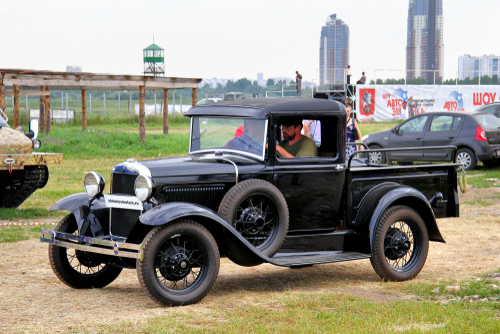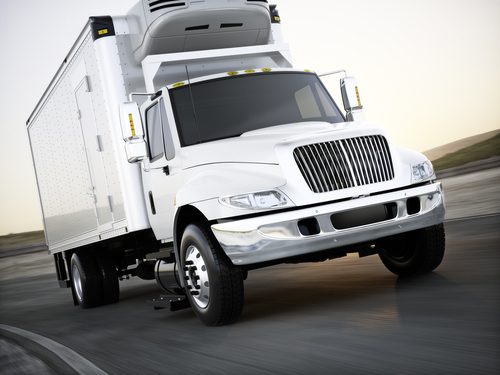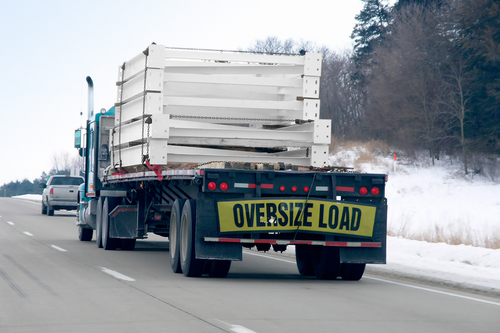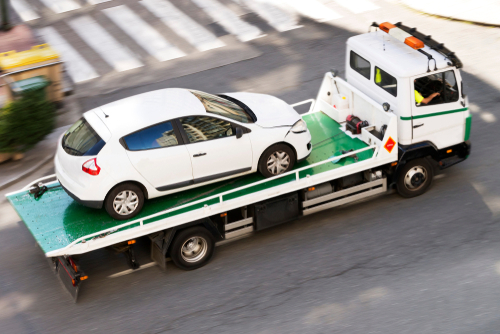Truck Vs. Pickup: What’s The Difference?
Truck vs pickup, what’s the difference? Isn’t a pickup a truck as well? Does the same hold true for a truck?

The debate between truck vs pickup has been a polarizing topic between truck enthusiasts and “real” truckers. What’s the real difference? Is it the size? The look? The function?
Ok, to put it simply, all pickups are technically trucks but not all trucks can be pickups. Sound confusing? Here’s an even simpler analogy to settle the truck vs pickup debate, pickups are small, trucks, are bigger. But then again, there are mini and micro trucks available in the market.
So let’s try again. Ok, here’s one: pickups have an extended hood, some trucks don’t.
That should help us narrow it down a bit more.
But to get the proper technical definition of what a truck is and what a pickup is, we have to take a critical look at the size, design, and function of these vehicles.
We Need To Agree On Something Before Moving On With The Truck Vs Pickup Subject
The one thing we can all agree on is that all trucks and pickups have the ability to haul, carry and tow materials.
Another thing is that there are so many factors that play a part into what makes a truck and what makes a pickup.
So, let’s take an in-depth look at the truck vs pickup difference, the pros and cons and how this came about.
Which Came First? The Truck Or The Pickup Truck?
Trucks first appeared in the late 1800s. As soon as the steam engine was invented, people wanted a workhorse that was more predictable than the animal kind. These were not the kind of trucks we see today. These were smaller, less powerful but useful enough for hauling cargo. The road conditions also limited these lorries from traveling long distances.
Pickups started coming into existence in the early 1900s. These vehicles started out as workhorses for rural areas. The only difference with pickups then and pickups now is how it was sold. You see, pickups then were add-ons to the Ford Model T. It came as a chassis only option with outsourced beds installed as an after-market feature.

This went on until Ford decided they could make a killing in the market if they sold complete pickups to the consumers instead of stand-alone.
By then, trucks had increased in size and were equipped with stronger chassis, more powerful engines, and bigger load capacities.
Massive Changes To The Pickup Truck
It took manufacturers a long time to realize that the pickup truck needed to be revamped. Most consumers were buying pickups not just as a utility vehicle but also for driving around. Customizers were adding little things here and there to make these massive vehicles more comfortable, more civilized, more in with the hip crowd.
The manufacturers soon realized that if they could make pickup trucks more comfortable, more people would buy them. So modern amenities like air-conditioning, automatic transmission, comfortable seats, airbags, and leather lining soon became a common thing.
The body styling also had to change. The boxy look was no longer in. They needed to streamline their vehicles to make them more aerodynamic, sleeker, more “with the times”.
The body construction also had to be lighter for fuel-efficiency . Larger windows were put in place for that panorama view. Cameras, sensors, entertainment systems, all of these things were added to make pickup trucks more appealing to the buying public.

And it worked.
Pickup truck sales increased.
And manufacturers have kept on innovating to keep up with the latest automotive developments.
How The Pickup Truck Became A Lifestyle Symbol
Most consumers during the 1950s used their trucks not just for hauling stuff in but for taking out to social events too. It also didn’t stop young people from taking their pickup trucks to parties especially if their family only owned one car.
This carried on for generations. Children who grew up liking trucks ended up buying them once they had the buying power of successful adults.
Soon enough, the customization industry stepped in and improved or restored trucks however their clients liked. Car shows eventually opened up to pickup truck entries.
The truck was no longer just a farm implement or a construction site workhorse. It had become the vehicle loved by generations.
Bigger engines were put in place and pickup truck races became commonplace. It seemed the truck had become the ubiquitous symbol of youth, freedom and the American dream.
Well, What About The Big Trucks?
Around the same time that pickups were adapting to modern times, so did the big trucks. Although the old ones were still running, truck owners opted to sell them once the newer, sleeker big trucks came out.

The truck vs pickup was heating up between what was macho and what wasn’t. What vehicle real men drove and what the normal soccer moms were driving around in.
The bottom line : there really was no sense in holding developments to big rigs just because of archaic ideas.
So that’s the story behind the truck vs pickup debate. There really wasn’t anything to it. Just some gearheads blowing off steam in crowded places and trying to see who was top dog.
Now for the nerdy stuff.
Different Classifications Of Trucks
Trucks are classified according to their GVWR. This is actually the best way to classify these vehicles and give a better explanation to answer the truck vs pickup debate.
Generally, pickups fall under light to medium trucks classification while heavy-duty trucks fall under the all-inclusive truck term. So, basically, the truck vs pickup debate can be based on how much the vehicle can handle. This is based on the Gross Vehicular Weight of the truck or the maximum load it can handle during operation.
- Class 1 – Light Truck – 0-6000 pounds
2. Class 2a – Light Truck – 6001-8500 pounds
3. Class 2b – Light/Medium Truck – 8501-10,000 pounds
4. Class 3 – Medium Truck – 10,001-14,000 pounds
5. Class 4 – Medium Truck – 14,001-16,000 pounds
6. Class 5 – Medium Truck – 16,001-19,500 pounds
7. Class 6 – Medium Truck – 19,501-26,000 pounds
8. Class 7 – Heavy Truck – 26,001-33,000 pounds
9. Class 8 – Heavy Truck – 33,001-and up
Truck Types By Size
Now we’ve also mentioned that trucks come in all sizes. They can be super small or super big. They all fall under the same truck category but the additional label makes it easier to classify them accordingly.
So here goes:
Ultralight Trucks
Ultralight trucks are the smallest trucks in production today. These are either gas-powered or run on batteries. Ultralights are used for off-highway purposes, mainly for tooling around golf courses, parks, factories, and other controlled environments.
Ultralights are low-speed vehicles that operate in the same manner as their bigger counterparts but with a load capacity relatively as heavy as the more massive trucks.
The unique thing about these ultralight trucks is that they can either be three, four or six-wheeled with corresponding load capacities.
Very Light Trucks
These are slightly bigger than the ultralights and usually, look and operate in the same manner. They are often mistaken for ultralights . These very light trucks are popular in Japan and other South East Asian countries and fall under the “kei” car category.

The added size and power they have differentiate them from ultralights . That also means they have a bigger payload.
Light Trucks
These trucks fall under the Class 1 to Class 2B GVWR classification. Once in the Class 2B category, they overlap into the Medium Truck territory.

These are the consumer cars you see today that are either used as workhorses or as people carriers.
Medium Trucks

These trucks fall under the Class 2B to Class 6 GVWR classification and are used for loading materials. Since most pickup trucks are getting bigger and bigger today, it is understandable that the Medium Truck Category overlaps with the Light Trucks Category.
Heavy Trucks
These trucks fall under the Class 7 to Class 8 GVWR classification and can be as massive as needed.
Knowing your GVWR and truck size classification should help you solve the truck vs pickup confusion.
Trucks By Body Type
Last but not least, trucks are also classified by body type. Here is a list of body types that we are most familiar with.
Box Trucks
Box trucks have an enclosed space for delivering cargo. These trucks come with double-wing rear windows and an optional side door for ease of personnel ingress/egress during checking.
Refrigerator Trucks

These are basically box trucks with insulated panels for transporting perishable goods or medicines. These trucks come with double-wing rear windows and an optional side door for economic purposes.
Concrete Mixers
These trucks come with a rotating drum on an inclined axis. These drums have to rotate to prevent concrete from settling and hardening while in transit. Once on site, the concrete is ejected through an attached chute. These are one of the examples of heavy and powerful trucks on the road today.
Dump Trucks
These are the most common trucks we see on the road. These trucks usually come with an open-box bed for loading materials in. This container is emptied by pushing a button that activates the hydraulic mechanism that tips the box over. This process of unloading is called “dumping” hence the name.
Flatbed Trucks

These trucks get their name from having a flat platform where a bed is supposed to be. This type of truck allows easy loading of materials from any ingress point. The materials are then tied down to reduce the risk of losing it in transit.
Semi-Trucks
Semi-trucks or semis have an articulation between the main vehicle and the tractor. These tractors detach and the main vehicle can be driven on the road with or without cargo.
Tankers

Tankers or tank trucks come with horizontally positioned cylindrical tanks that are designed to carry and transport liquids or gases.
Wreckers

Wreckers, short for “recovery” trucks or lorries are mainly used to tow and/or recover vehicles. These trucks come with a boom with a cable for easy recovery of vehicles. Wheel or chassis lifts are becoming a main feature nowadays for wreckers.
I hope all of this information has cleared the truck vs pickup confusion you have.
Related Questions:
Who Would Win In A Towing Contest?
A truck vs pickup towing contest would rely on the present condition of the vehicles involved. Engine size, vehicle weight, tire type, terrain, all of these are factored in. A new, heavier truck with a good engine will always win but we may have to recheck this once the Tesla Cybertruck is out.
When Will The Truck Vs Pickup Naming Debate End?
The truck vs pickup naming debate will never end. Pickups are becoming a very popular vehicle for the average consumer and manufacturers are not too shy about calling their products trucks in an effort to hit the right “macho” market. Not to mention, pickups are becoming as big as heavy-duty trucks.
If I Drive A Pickup, Am I Also Qualified To Drive A Truck?
In the case of truck vs pickup driving qualifications, you will need a proper license to drive a heavy-duty truck. Even if you own the biggest pickup in the market today, it’s still a different experience when you get behind the wheel of an actual truck. You will need an additional permit for that.